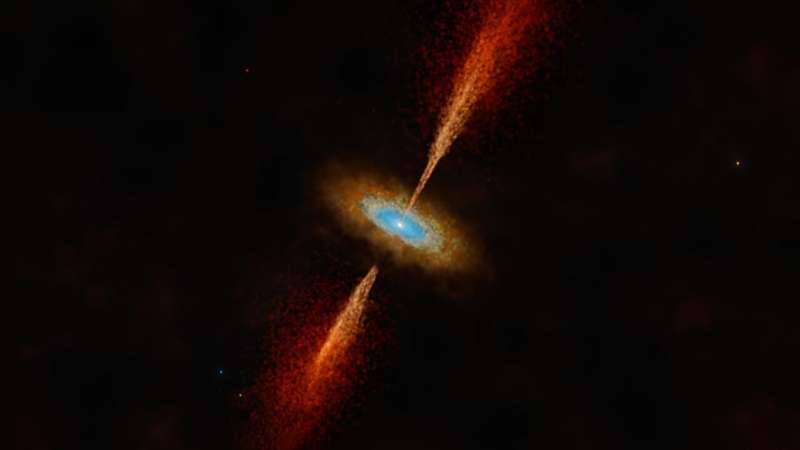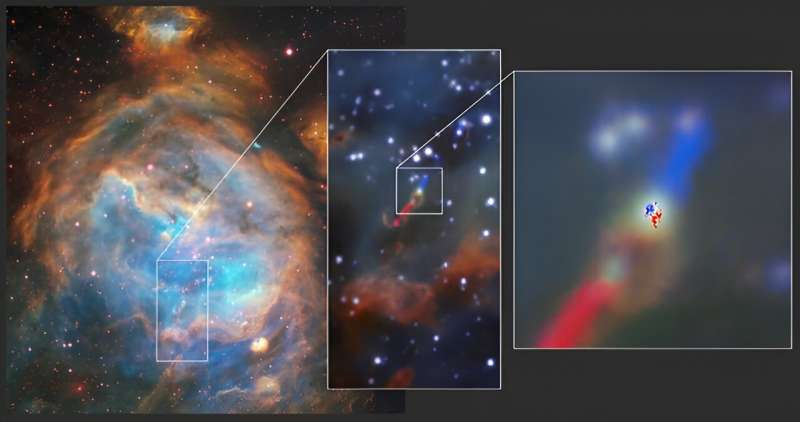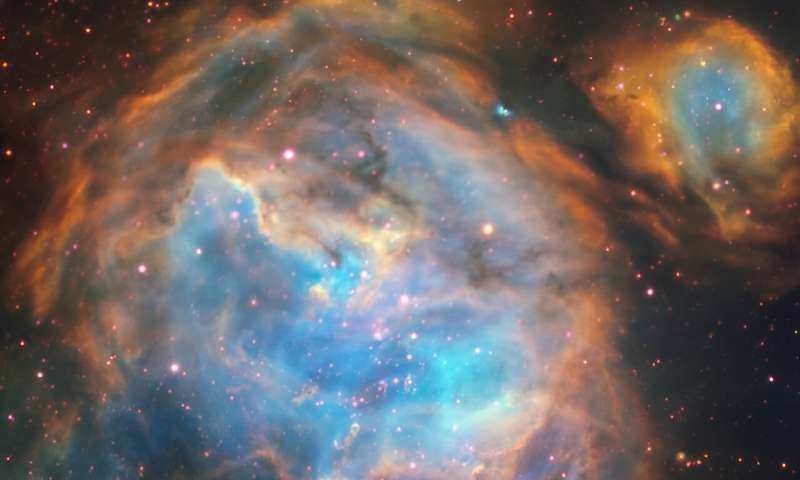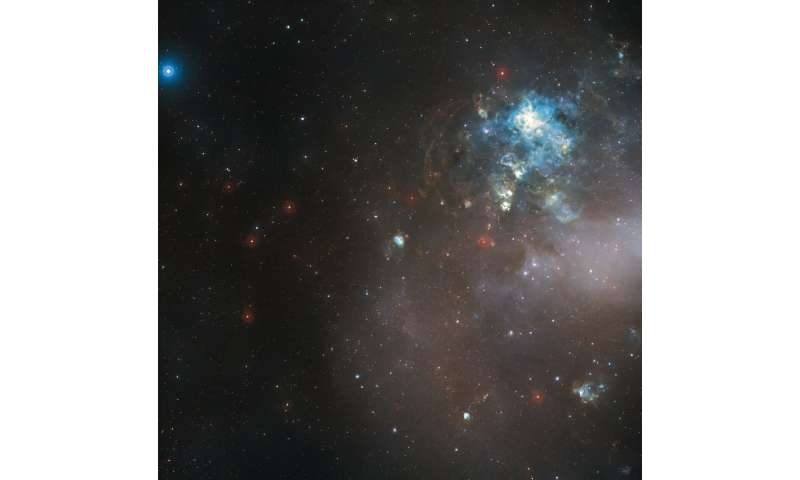This article has been reviewed according to Science X's editorial process and policies. Editors have highlighted the following attributes while ensuring the content's credibility:
fact-checked
peer-reviewed publication
trusted source
proofread
Astronomers detect first extragalactic circumstellar disk around a massive young star outside of the Milky Way

An international team of astronomers led by Durham University and including astronomers at the UK Astronomy Technology Center has reported the first detection of a rotating disk structure around a forming high-mass star outside of our Milky Way in another galaxy.
The disk surrounds a young massive star located in a stellar nursery called N180, residing in a neighboring dwarf galaxy called the Large Magellanic Cloud.
At a distance of 163,000 light years from Earth, this is the most distant disk around a massive star ever to be directly detected.
Using the Atacama Large Millimeter/submillimeter Array (ALMA) in Chile, in which the European Southern Observatory (ESO) is a partner, researchers observed motions in gas around a young stellar object in the Large Magellanic Cloud consistent with a Keplerian accretion disk—the kind that feeds the growth of stars through infalling material.
The team's findings have been published in the journal Nature.
As matter is pulled towards a growing star, it cannot fall directly onto it; instead, it flattens into a spinning disk around the star. Closer to the center, the disk rotates faster, and this difference in speed is the smoking gun that shows astronomers an accretion disk is present.

Lead author of the study, Dr. Anna McLeod from Center for Extragalactic Astronomy, Durham University said, "When I first saw evidence for a rotating structure in the ALMA data, I could not believe that we had detected the first extragalactic accretion disk; it was a special moment.
"We know disks are vital to forming stars and planets in our galaxy, and here, for the first time, we're seeing direct evidence for this in another galaxy.
"We are in an era of rapid technological advancement when it comes to astronomical facilities.
"Being able to study how stars form at such incredible distances and in a different galaxy is very exciting."
Massive stars, like the one observed here, form much more quickly and live far shorter lives than low-mass stars like our sun.
In our galaxy, these massive stars are notoriously challenging to observe and are often obscured from view by the dusty material from which they form at the time a disk is shaping around them.
-

Bubbles of brand-new stars Credit: European Southern Observatory -

Digitized Sky Survey image around the HII region LHA 120-N 180B Credit: European Southern Observatory
Unlike similar circumstellar disks in the Milky Way, this system is optically visible, likely due to the lower dust and metal content of its surrounding environment. This gives astronomers a peek into the dynamics of accretion that are typically hidden behind veils of gas and dust.
Analysis of the disk suggests an inner Keplerian region transitioning to infalling material at larger distances from the central star. The star is estimated to be around 15 times the mass of our sun.
While bearing many familiar characteristics of Milky Way disks, some intriguing differences also emerge. The low metal content typical of the LMC seems to make the disk more stable against fragmentation.
The successful detection of this extragalactic circumstellar disk boosts prospects for finding more such systems with ALMA and the upcoming Next Generation Very Large Array (ngVLA).
Studying star and disk formation across different galactic environments will help complete our understanding of stellar origins.
More information: Anna McLeod, A probable Keplerian disk feeding an optically revealed massive young star, Nature (2023). DOI: 10.1038/s41586-023-06790-2. www.nature.com/articles/s41586-023-06790-2
Journal information: Nature
Provided by Durham University




















